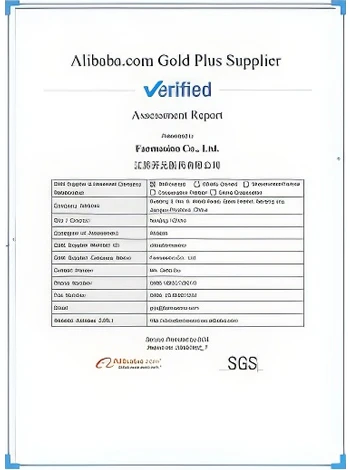



function of coagulant in water treatment
The Function of Coagulant in Water Treatment
Water treatment is a critical process that ensures the provision of safe and clean drinking water. One of the pivotal steps in this process is coagulation, where coagulants are employed to remove suspended particles and impurities from water. Coagulation can drastically improve water quality, reduce turbidity, and eliminate harmful microorganisms. This article explores the function of coagulants in water treatment, the types of coagulants used, and the overall benefits derived from their application.
Understanding Coagulation
Coagulation is a physical-chemical process that involves the destabilization of colloidal particles in water. Colloidal particles such as silt, clay, and organic matter possess negative charges, which keep them suspended in water. When a coagulant is added, it neutralizes these charges, allowing particles to aggregate and settle down. This process is usually followed by flocculation, where the formed aggregates, called flocs, are further encouraged to clump together, making it easier to remove them during subsequent filtration processes.
Types of Coagulants
Several types of coagulants are commonly used in water treatment facilities. The most prevalent include
1. Aluminium Salts Compounds such as aluminium sulfate (alum) are widely used because of their effectiveness and cost-efficiency. When alum is dissolved in water, it reacts to form aluminium hydroxide, which serves as the primary coagulant.
2. Ferric Salts Ferric chloride and ferric sulfate are alternatives to aluminium-based coagulants. They are particularly effective in treating water with high turbidity and organic content.
3. Polymers Synthetic organic polymers are employed as coagulants or coagulant aids. They enhance floc formation and can improve the settling characteristics of the flocs.
4. Lime Calcitic lime can act as both a coagulant and a pH adjuster. It is particularly beneficial in softening water and reducing hardness.
The Coagulation Process
function of coagulant in water treatment

The coagulation process typically involves several stages. Initially, the coagulant is added to the water source, often accompanied by rapid mixing to ensure even distribution. After this rapid mixing, a slower mixing phase follows, inducing the formation of flocs. Finally, the water is allowed to sit, permitting the flocs to settle at the bottom. The clarified water can then be removed for further treatment or distribution.
Benefits of Coagulants
The use of coagulants offers numerous benefits in the realm of water treatment
1. Improved Water Quality Coagulants significantly reduce turbidity by removing suspended solids and sediments, resulting in clearer water, which is more aesthetically pleasing and safe for consumption.
2. Removal of Pathogens Coagulation can also lead to the removal of harmful microorganisms, thereby reducing the risk of waterborne diseases.
3. Enhanced Filtration Coagulation enhances the efficiency of subsequent filtration processes. Larger flocs are easier to filter, reducing the burden on filtration systems and extending their lifespan.
4. Cost-Effectiveness The use of coagulants reduces the need for advanced treatment technologies, making water treatment processes more economical and accessible.
5. Sustainability By effectively removing contaminants, coagulants contribute to the sustainable management of water resources, promoting the reuse and recycling of water.
Conclusion
In summary, coagulants play an essential role in water treatment, facilitating the removal of suspended particles and pathogens, and enhancing overall water quality. The various types of coagulants available allow water treatment facilities to address specific challenges effectively and economically. As the demand for clean and safe drinking water continues to rise globally, understanding and optimizing the coagulation process remains crucial for ensuring public health and environmental sustainability.
-
Why Strontium Carbonate Still MattersNewsJun.06,2025
-
Why BaSO4 MattersNewsJun.06,2025
-
Why Barium Carbonate Still MattersNewsJun.06,2025
-
Strontium Hydroxide: A Versatile Compound for Modern ApplicationsNewsJun.06,2025
-
Strontium Chloride in Daily IndustryNewsJun.06,2025
-
Pure Potassium Nitrate for SaleNewsJun.06,2025
-
What Is Sodium Bisulfate Used For?NewsMay.15,2025










